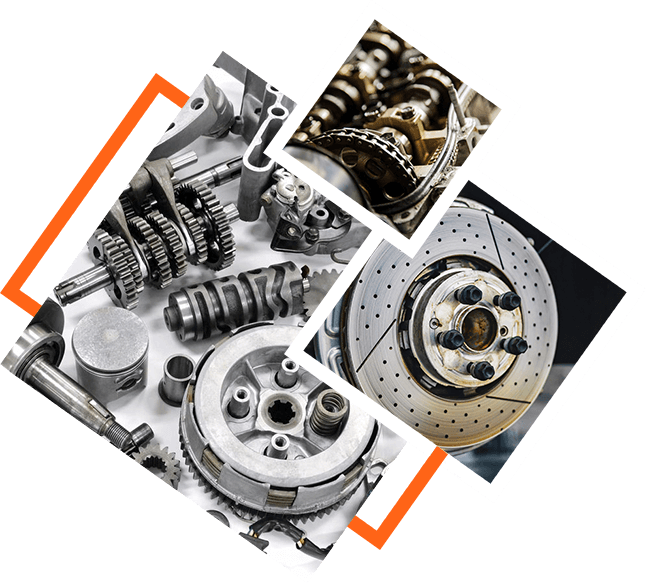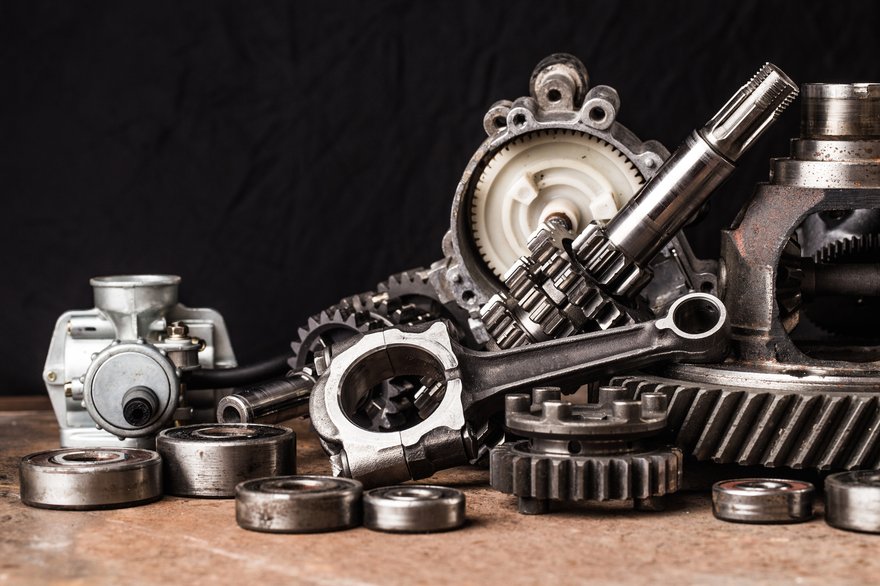If you are deciding between new and used parts for your car, the condition is critical to performance, cost, and long-term durability. Here are 10 of the most essential tips, together with their advantages and cons:
1. Understand the Role of the Part as well as its importance
Always consider buying new components for safety-critical parts, such as suspension, brakes and steering.
Pros : New parts increase reliability and reduce chance of failure.
Cons: Used components may seem appealing due to cost but can be dangerous for vital systems.
2. Be aware of the wear and tear aspect.
Tip: Assess how wear affects a component’s performance.
Pros: New parts guarantee optimal performance and longevity.
Pros: Even in great condition, parts that have been used may have a shorter lifespan.
3. Check the longevity of the part.
Use used parts for long-lasting parts (e.g. wheels, body panels).
Advantages: Used items can save you a significant amount of money while remaining useful.
Cons: Some issues that are difficult to spot (like concealed damage or rust) might only be discovered in the near future.
4. Examine used parts for damage
Tip: Physically inspect used parts for cracks, corrosion, or excessive wear prior to buying.
Pros: It ensures that the parts meet a minimum standard.
Cons: Not all parts can be inspected thoroughly and thoroughly, particularly on the internet.
5. Check Availability for New and used
Utilize old components to fill in the gaps in your collection if you aren’t able to find new ones or they are prohibitively costly.
Benefits: Keeps the vehicle operating continuously.
Cons: A replacement may be needed earlier than with a new component.
6. Verify the compatibility and history used parts
Tips – Make sure the components you use are in line with the specifications of your car and also have a clean service history.
Pros: Reduces the chance of purchasing a component that isn’t a good fit or in a bad condition.
Cons: Limited history information can lead to confusion.
7. Think about Refurbished and Rebuilt Parts
Tip : Refurbished (e.g. alternators and transmissions) parts are an affordable alternative to new.
Pros: Cost-effective with improved reliability when compared to used components.
Cons: Quality depends on the condition of the refurbishment process and reputation of the vendor.
8. Account for Budgetary Constraints
TIP: If you’re looking for parts other than the essentials, like trimming or interior accessories (e.g.) or trim (e.g.) used parts will cost less.
Cons: Savings on functional requirements while still meeting budget.
The components used might not be as appealing or perform as well.
9. Make sure you check the warranty
Tip: New parts usually include warranties, however some used parts from reputable sellers may also have limited warranties.
Cons: It doesn’t offer security in the event that there are defects or failures.
Cons: It is often more difficult and expensive to find used parts that come with warranties.
10. Know the impact of resales
Tip. New parts are a great way to increase the value of your car, particularly for major repairs.
Benefits include: Buyers are more willing to trust vehicles that are backed by quality repairs.
Cons: Used car parts could not be viewed as having the same worth.
Take a look at the pros and pros and.
There are numerous benefits to using new parts.
Guaranteed performance, compatibility and long-term durability.
Often, they come with warranties from the manufacturer.
Best choice for critical system and resales.
Cons of new parts:
Costs upfront are higher.
Some parts may be hard to find for older models or rare models.
The advantages of reusing components:
Cost-effective, particularly for less critical components.
More easily available for older or discontinued model.
Eco-friendly (recycles materials already available)
Contradictions of used parts
Increased risk of defects and wear.
No or limited warranty
Requires careful inspection to ensure quality.
Make an informed choice by balancing your requirements, priorities and budget with these suggestions. See the top pacelajs car parts par lifan cars for blog tips including sellers auto salvage, gadi ke part, weekly auto salvage, parts code, c and c auto salvage, check parts by vin number, spare parts by vin, auto parts auto, auto parts l, jsf parts and more.

Ten Tips For Car Part Durability And Maintenance
When buying automobile parts, take into consideration their durability and maintenance requirements. This will affect your vehicle’s longevity and overall cost. Here are 10 important tips, with their advantages and disadvantages:
1. Search for the lifespan of the part
Tips: Find out how long the part is expected to last according to both the manufacturer’s guidelines and past experiences with users.
Cons: Doesn’t permit proactive maintenance.
Pros: Estimates of life span can be affected by the driving habits, environmental conditions, and maintenance.
2. Check for Wear and Tear Resistance
Tip: Look for parts with high levels of wear resistance for instance brakes and belts.
Pros: Reduces replacement frequency and maintenance expenses.
Cons: The initial cost of high-durability components could be more expensive.
3. Material Quality
Tip: Choose parts made using durable materials, such as stainless-steel, carbon composites, and reinforced alloys.
Pros: High-quality materials are more durable and can endure harsh conditions.
Cons: Premium materials can increase the cost of the item.
4. Select parts with corrosion resistance
Tip: Choose corrosion-resistant parts especially for parts that are exposed to water, such as brake components, exhaust systems or suspension parts.
Benefits: This component is more durable, especially in areas of high humidity or when road salt is utilized.
Cons: Products which are resistant to corrosion are often expensive.
5. Check the Warranty and Refund Policy
Check the warranty to see whether it covers parts that are defective or premature failures due to problems with durability.
Cons A good warranty could give you peace of mind and also save cash in the event that the component fails before it is time.
Cons: Certain warranties may be limited or require certain conditions to be met before they are valid.
6. Think about the Maintenance Frequency
Tips – Select components that have minimal requirements for maintenance, such as sealed or low-maintenance items (e.g. batteries that are maintenance-free and sealed bearings).
Pros: It decreases the time and cost needed to maintain the part.
Cons: Low-maintenance items might cost more upfront, or offer less repair ability.
7. Select Parts that are Easy to replace or service
Select parts that are easy to service or replace to save on costs in the future and maintenance work.
The simplest way to replace or repair without spending a lot of money and time.
Pros: Some components that are made for replacement are likely to not last as long as more complex counterparts.
8. Read Reviews and User Feedback
TIP: Look up online reviews or speak to an expert mechanic about the durability of the part.
Pros : It offers real-world information about the durability and maintenance of the components.
Cons: Reviews could be subjective and not represent your actual usage or conditions.
9. Consider the Reputation of Manufacturers
Tips: Buy only from trusted car parts manufacturers with a long track record of producing sturdy and reliable parts.
Pros: Trusted brand are likely to create long-lasting, high-quality components.
Cons: Brand-name items are more expensive.
10. Cost-effectiveness and durability must be balanced.
Tip – While durability is essential, you also need to consider your budget. Sometimes, you have to weigh durability and price particularly for parts that aren’t as critical.
Pros: It will provide long-term value without excessive spending on things that aren’t essential.
Cons The cost of cutting corners on important components will result in more frequent and costly replacements.
Final Thoughts: Weighing Pros vs. Cons
Think about Durability and Maintenance as an opportunity to earn a living:
Cost-Effectiveness – Long-lasting parts reduce the need for frequent repairs, leading to a long-term savings.
Low-maintenance, low-cost parts will help you save time.
Reliability. Making use of high-quality components will result in less breakdowns.
Cons of ignoring the durability and maintenance
Initial Cost: High-quality and long-lasting parts are typically more expensive up front.
Overestimating Longevity. Even the strongest parts can wear out.
Complication: High-quality parts may be more difficult to replace or repair. This means that labor costs are higher.
These suggestions can assist you choose components that are not only robust, but also cost-effective and easy to maintain throughout the lifetime of your vehicle. Check out the top transmisijas ella parts for mg cars for blog recommendations including parts auto parts, auto parts on, bmw auto wrecking near me, carro parts, part parts, auto detalas riga, bmw part no, rezerves dalas riga, cac parts, auto parts lv and more.
